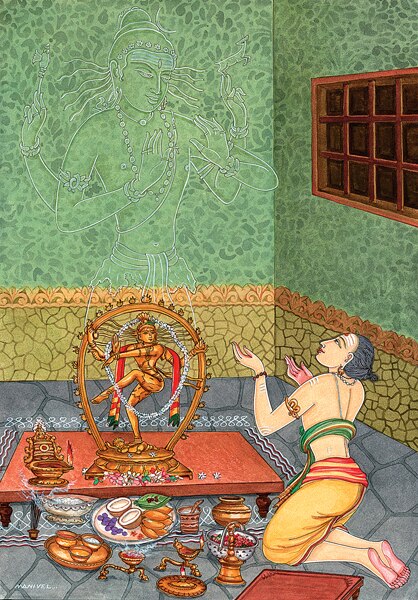Lakulisha was a prominent Shaivite revivalist, reformist and preceptor of the doctrine of the Pashupatas, one of the oldest sects of Shaivism.
Lakulisha at Sangameshvara Temple at Mahakuta, Karnataka (Chalukya, 7th century CE). His 5th–10th century ithyphallic statues are also found in seated yogi position in Rajasthan, Uttar Pradesh and elsewhere.
Early Gupta relief on the Lakulisa pillar, inscribed Gupta era "year 61", 380 CE.
Lakulisha among his four disciples Kusika, Garga, Mitra, and Kaurushya, rock-cut stone relief, Cave Temple No. 2 at Badami, Karnataka, Early Chalukya dynasty, second half of the 6th century CE
Statue of Lakulisha, Pratihara, 9th century CE.
Shaivism is one of the major Hindu traditions, which worships Shiva as the Supreme Being. One of the largest Hindu denominations, it incorporates many sub-traditions ranging from devotional dualistic theism such as Shaiva Siddhanta to yoga-orientated monistic non-theism such as Kashmiri Shaivism. It considers both the Vedas and the Agama texts as important sources of theology. According to a 2010 estimate by Johnson and Grim, Shaivism is the second-largest Hindu sect, constituting about 253 million or 26.6% of Hindus.
Shiva (above) is the primary deity of Shaivism.
The "Pashupati" seal from the Indus Valley civilisation.
Kushan coin of Vima Kadphises (2nd century CE), with a possible Shiva, holding a trident, in ithyphallic state and next to a bull, his mount, as in Shaivism. The deity was described by the later Kushans in their coinage as "Oesho", a possibly kushan deity.
Shiva (middle) is the supreme being of Shaivism, accompanied by his son Ganesha (left) and consort Parvati (right). Painting by Raja Ravi Varma.








